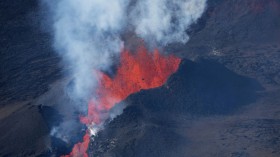The past century of the El Niño Southern Oscillation (ENSO) weather phenomenon has been unusually active compared to the previous 600 years of activity, according to new research published in the journal Climate of the Past.
The international team behind the research, which included scientists from University of New South Wales, the University of Hawaii International Pacific Research Center and the NOAA Geophysical Fluid Dynamics Laboratory, looked to the past to interpret current El Niño-related events around the globe.
El Niño is best known for the calamitous weather events it creates around the globe. Episodes of great flooding or epic drought have both been linked to El Niño.
But how the ENSO behaves as a result of a warming climate is still poorly understood. And because the instrumental records of ENSO activity do not go back far enough to yield any valuable analysis, research teams have looked at biological clues such as samples from lake sediment cores, corals or tree rings as proxies for past ENSO behavior.
But among all the different science teams that have sought to measure ENSO effects via biological clues, a cohesive consensus had not been reached, as disagreements about the data are widespread.
Shayne McGregor, of the Climate Research Center at the University of New South Wales, and his team developed a way to view past ENSO activity with a more consistent and robust point of view that settles many of the discrepancies present in previous analyses.
McGregor and his team's approach resulted in the synthesis of many different existing proxies that paint a picture of past ENSO activity with modern instrumental data.
The team found that ENSO was more active during 1979-2009 than during any 30-year period between 1590 and 1880.
"Our results represent a significant step towards understanding where current ENSO activity sits in the context of the past." said Axel Timmermann, professor at the University of Hawaii and co-author of the study.
"Climate models provide no clear indication of how ENSO activity will change in the future in response to greenhouse warming, so all we have to go on is past records," McGregor explained. "We can improve the projections of climate models, however, by selecting those that produce past changes in ENSO activity consistent with the past instrumental records.
"Our new estimates of ENSO activity of the past 600 years appear to roughly track global mean temperature," McGregor said, "but we still don't know why."
© 2024 NatureWorldNews.com All rights reserved. Do not reproduce without permission.





